Male Neotibicen tibicen tibicen molting. Other names for this cicada include: Morning Cicada, Swamp Cicada and formerly Tibicen chloromera or chloromerus.
Click each image for larger images:
Male Neotibicen tibicen tibicen molting. Other names for this cicada include: Morning Cicada, Swamp Cicada and formerly Tibicen chloromera or chloromerus.
Click each image for larger images:
Joe Green’s Neocicada hieroglyphica photos from 2007, Florida, part 2:
Joe Green’s Neocicada hieroglyphica photos from 2007, Florida, part 1:
Roy Troutman sent us photos of this mysterious cicada-shaped object. We don’t know what it is, but it looks cool.
Front:
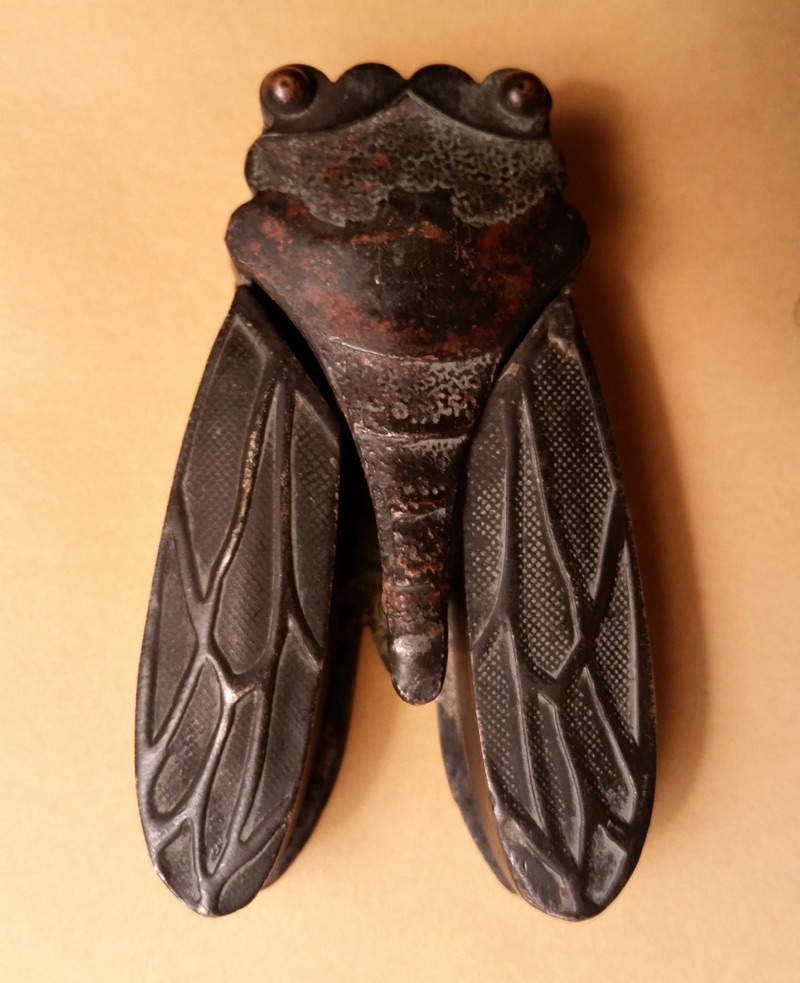
Back:
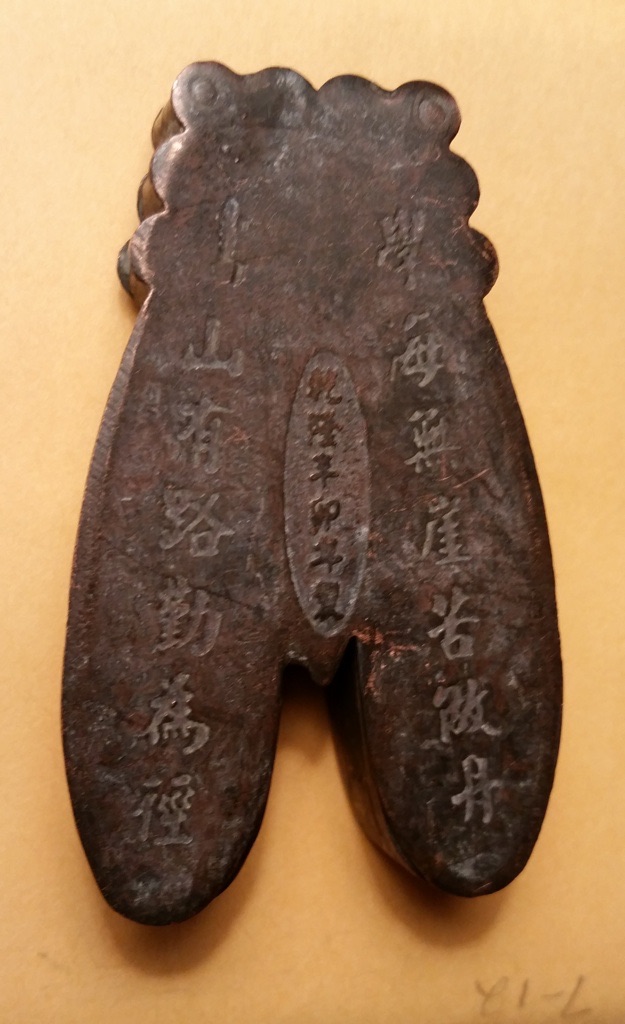
Wings spread:
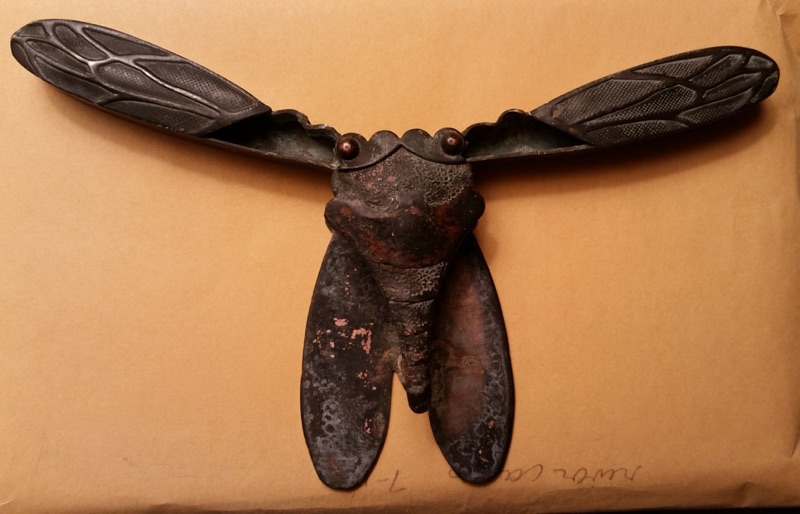
Okanagana rimosa exuvia (skins, shells) photos by Elias Bonaros. From 2010, I believe.
Note the dark lines on the abdomen — that’s an easy way to distinguish Okanagana exuvia from other types of cicadas.
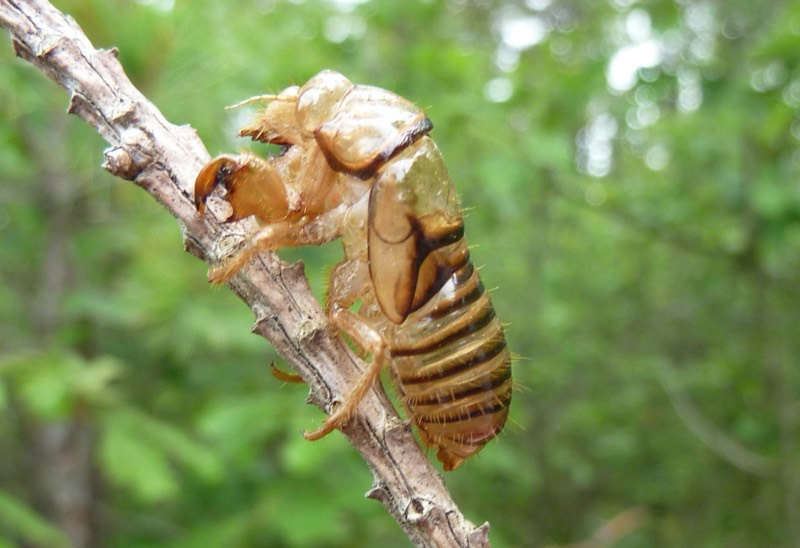
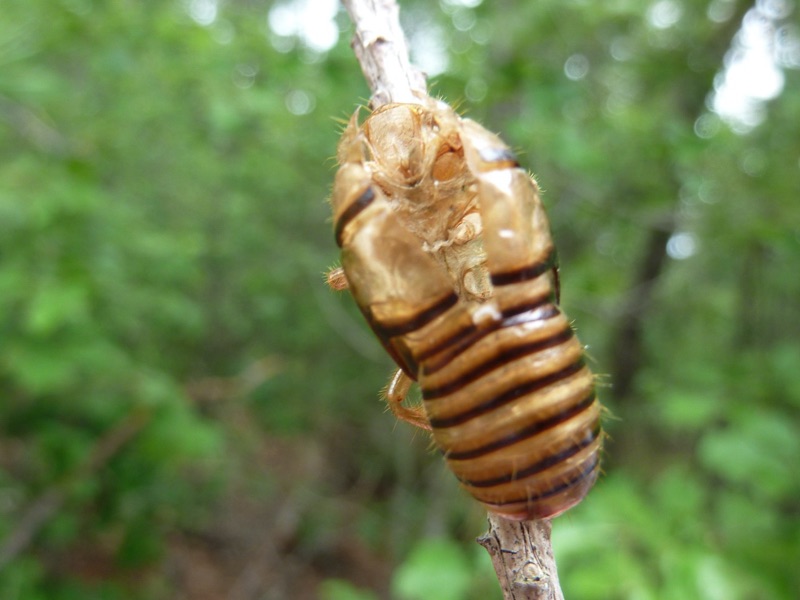
Orange Drummer (Thopha colorata) photos by Jodi from 2007. Australia.
Text for the photos from back in 2007: “Thanks to Jodi for allowing us to post some of her Orange Drummer (Thopha colorata) photos. Two today, two tomorrow! Apparently they’re hatching in droves in Central Australia.”
A molting Orange Drummer (Thopha colorata):
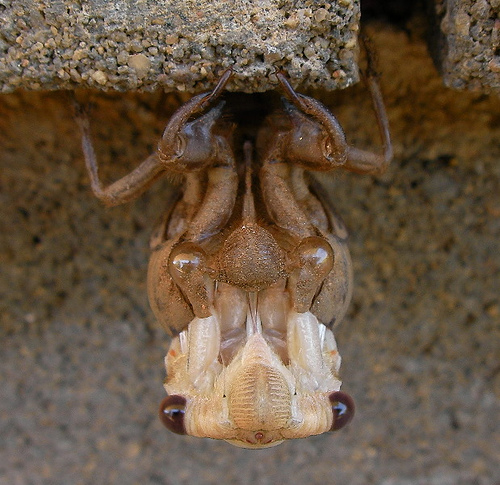
Orange Drummer (Thopha colorata):
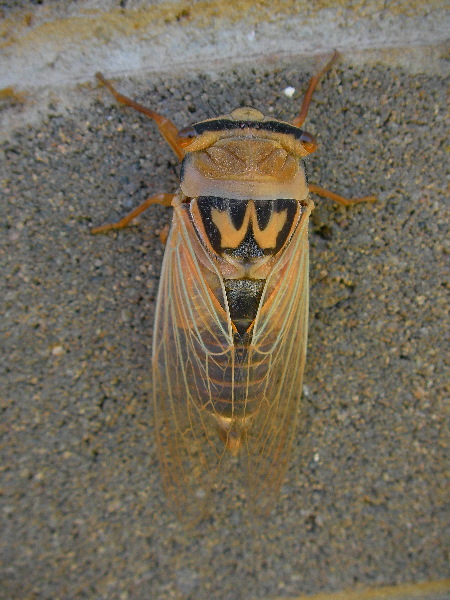
Teneral, recently molted Orange Drummer (Thopha colorata):
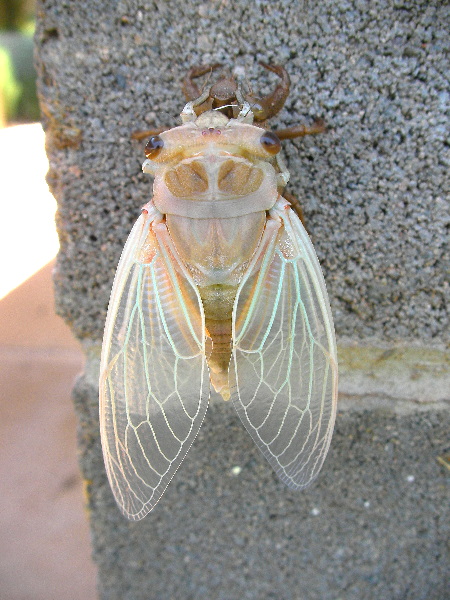
Teneral, recently molted Orange Drummer (Thopha colorata):
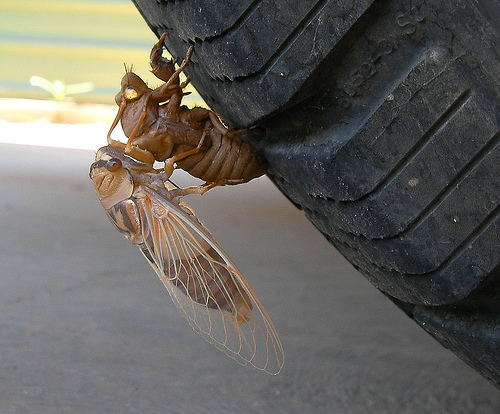
My Neotibicen photos from 2004.
As I reupload all the images on my website, even the horrible low-rez images will be reuploaded. Why? It’s my website, and I like them.
This photo isn’t so bad. It’s Neotibicen exuvia (skins, shells) surrounding a coin:
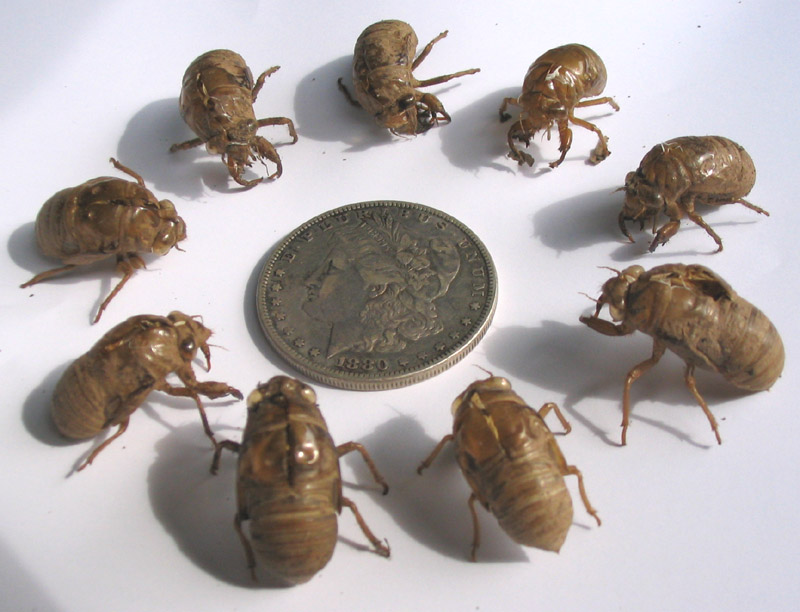
This photo is blurry, but there’s a Neotibicen tibicen (formerly Tibicen chloromera) in the shot.
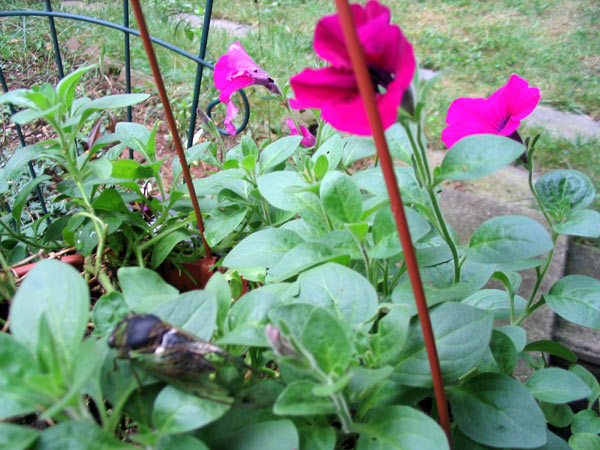
Another blurry photo. This shows a Neotibicen tibicen with wings damaged during the molting process.
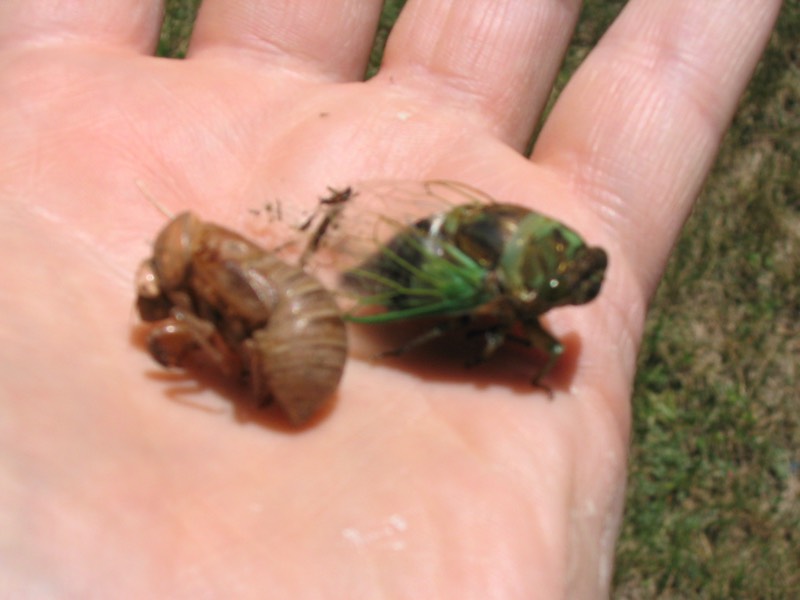
My Magicicada photos from 1996, Brood II. These were taken with disposable cameras and scanned in with a flatbed scanner also from the 1990s. They’re mostly from Metuchen NJ. Otherwise they’re from Westfield NJ.
At this point in time I was not as interested in cicadas as I am now. Back in 1996 they were more of a novelty, but over time my obsession grew.
Magicicada adults in a jar:
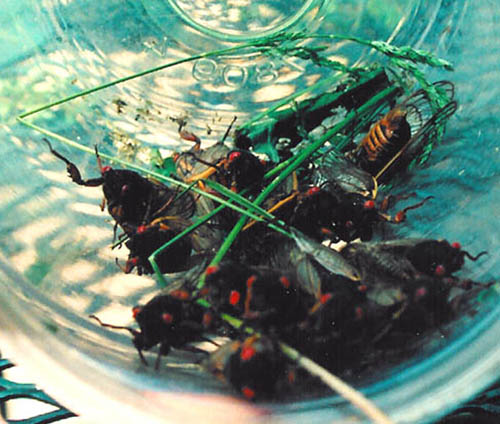
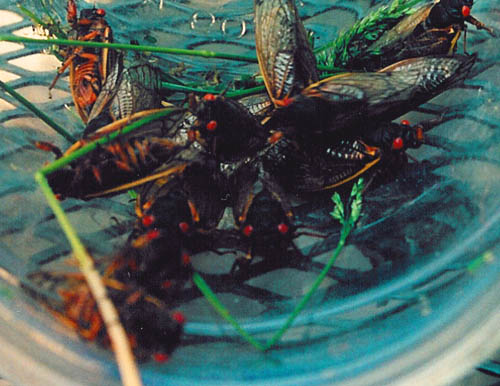
Magicicada exuvia in a jar:
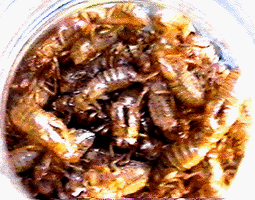
Scenes from a cicada wedding:
My friends David & Claire were married in an outdoor wedding ceremony in Westfield, NJ, at the peak of the Brood II emergence. No one freaked out — in fact everyone seemed to enjoy it, especially the kids.
The bride and groom, Claire and David:

A cicada creeping up a wedding chair leg during the ceremony:
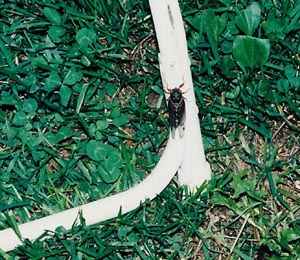
Video from the wedding:
I was even calling them “locusts” back then. Gee wiz.
My Magicicada Photos from 2004, Brood X. These were taken in Princeton, New Jersey, with a home video camera. Princeton is a “hot spot” for Brood X in New Jersey. They’re usually out during the Princeton University graduation ceremonies, which is a nuisance for both graduates & their families and for people who come to see the cicadas (and could care less about the graduates). Interestingly enough, the Princeton colors (orange & black) closely match the colors of the cicadas.
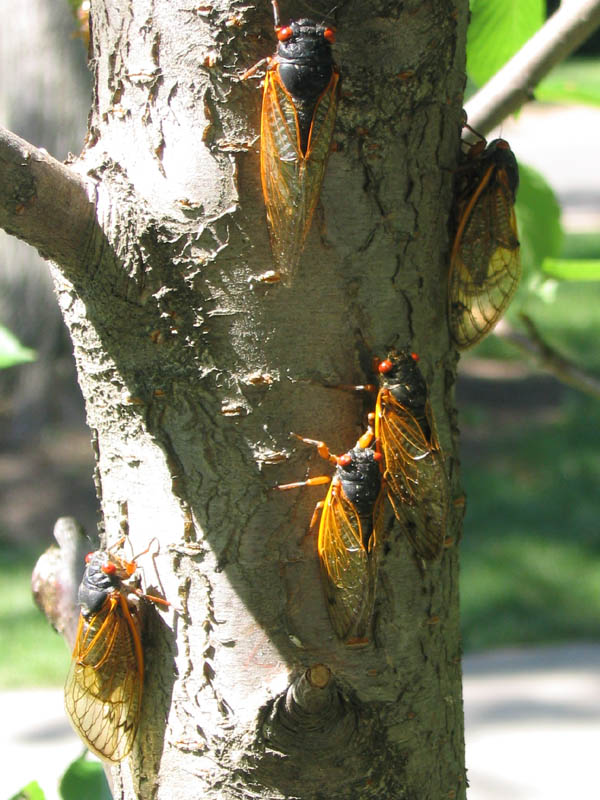
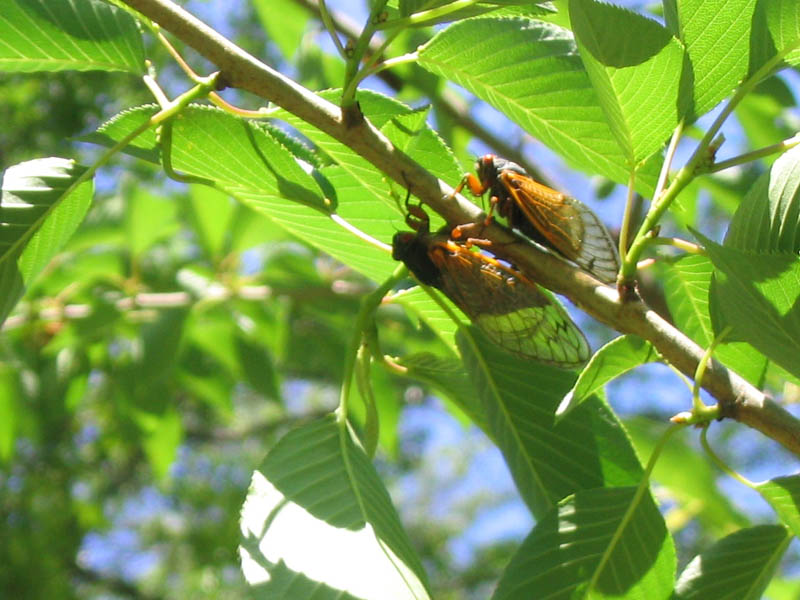

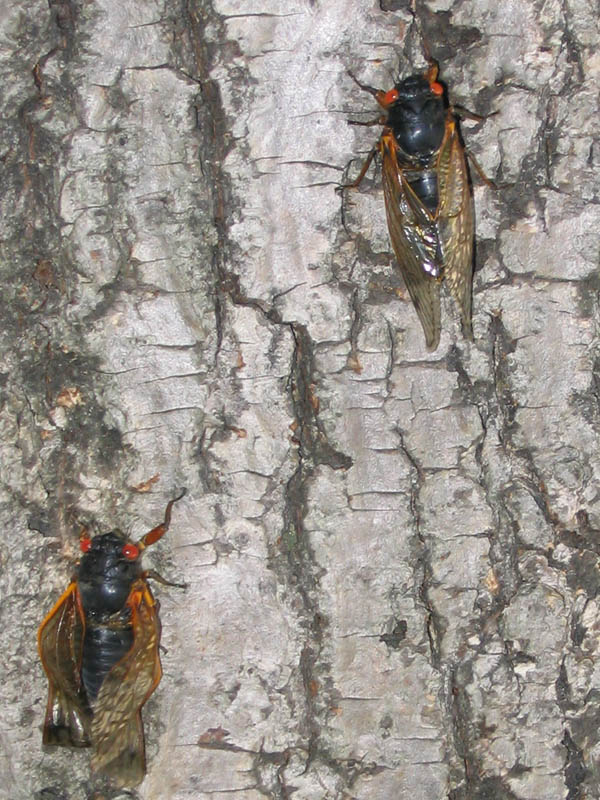
These images go back to 2007 (Brood XIII).
Sue had noticed that seagulls had taken a liking (maybe an obsession) to cicadas. Look at all those seagulls ready to swoop down (or up) and grab a cicada:
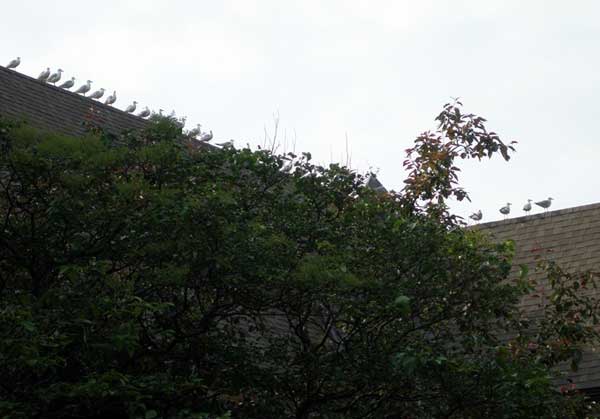
No seagulls in this photo, just exuvia on a tree:
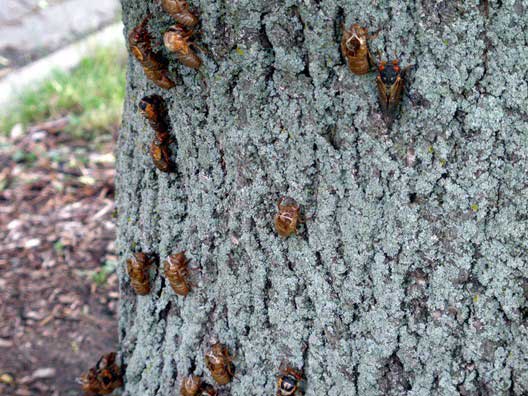
I live near the ocean and can testify that seagulls are bold and voracious eaters. They pose a threat to not just cicadas, but also seals and even Jedi: